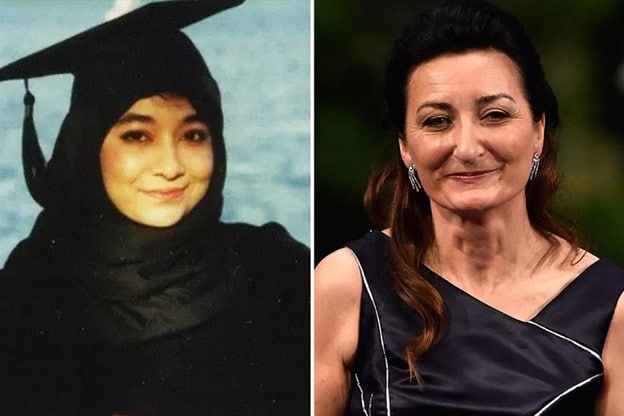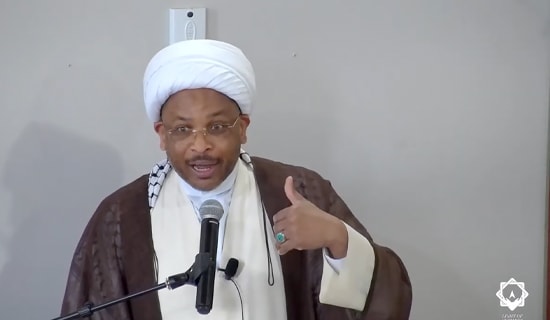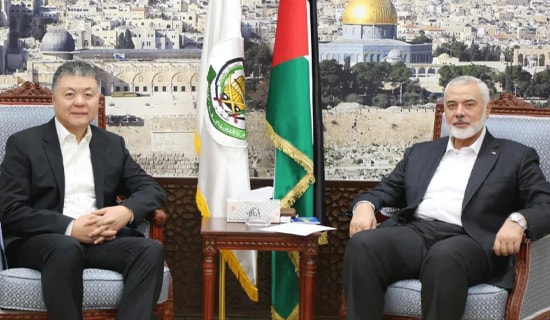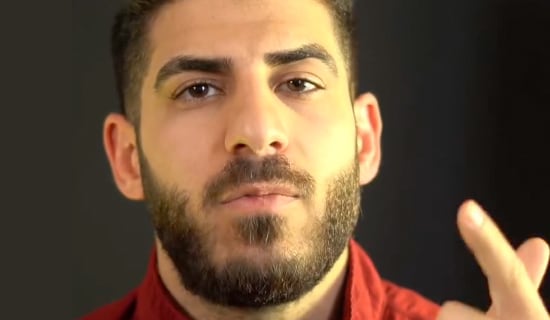In his April 26, 2022 column on Ahram Online, the English-language website of the Egyptian state daily Al-Ahram, journalist and political scientist Ahmed Al-Moslemany, president of the Cairo Center for Strategic Studies and former advisor to Egyptian president 'Adly Mansour, draws a comparison between two women neuroscientists: the Pakistani Afia Siddiqui and the Norwegian May-Britt Moser.
Afia Siddiqui studied at MIT and earned her Ph.D. in neuroscience from Brandeis University. However, she went on to become affiliated with Al-Qaeda and apparently helped this organization to develop chemical and biological weapons. She was eventually sentenced to 86 years in prison for assaulting U.S. servicemen with a rifle while in custody. In 2014 ISIS offered to release American journalist James Foley in return for her release, an offer which the U.S. refused. As for May-Britt Moser, she studied at the universities of Edinburgh and Oslo, and in 2014 was awarded the Nobel Prize in Physiology or Medicine for her part in the discovery of cells that constitute a positioning system in the brain.
Siddiqui, writes Al-Moslemany, could have used her knowledge, as Moser did, to serve humanity and her country, for example by establishing a modern institute of neurosciences in Pakistan. But instead she chose to use her knowledge in the service of terrorism. "Siddiqui was trying to develop neuroscience for the sake of death, and May was trying to develop neuroscience for the sake of life," he says, which is why the former ended up in prison, and the latter on the podium in Oslo.
Al-Moslemany adds that this is not just a story of two scientists. The Islamic world, he emphasizes, is faced with the same choice, between the path of progress and development and that of sabotage and destruction. "It is the tale of two opposing vocations and the future of two civilizations," he concludes.
The following are excerpts from his article:[1]
"The United States was occupied for 12 hours with a terrorist incident in Texas, where a British person held hostage a synagogue rabbi and three worshipers for long hours. The terrorist claimed to be the brother of Dr. Afia Siddiqui, and demanded her release in exchange for the release of the hostages. The terrorist was killed in the incident and no one was injured.

Afia Siddiqui (left) and May-Britt Moser (Source: Ahram.org.eg, April 26, 2022)
"Who is Afia?
"Afia Siddiqui was born in 1972 in Pakistan. She graduated from the Massachusetts Institute of Technology and then received her Ph.D. in neuroscience from the prestigious Brandeis University…
SUPPORT OUR WORK

"Neuroscience studies 'the biological basis of learning, memory, behavior, cognition, and consciousness.' While the successes of biology seem to have taken it to an unprecedented level, the field of neuroscience still has a lot to do. According to the great scientist Eric Richard Kandel, Nobel Prize winner in 2000, 'Neuroscience represents the final challenge for biology.'
"Siddiqui had a precious opportunity to serve humanity and serve her country. She was very fortunate to study that impactful science in the world's major universities. Her duty could have been to return to Karachi to establish a modern institute of neurosciences, to benefit her country with that with which she had been blessed, and to return to her homeland what she had been given.
"Siddiqui chose a different path, however. She started working with terrorist groups on engineering a lethal recipe: science in the service of murder.
"The Pakistani neuroscientist lived in Boston. She was trying to convince her husband to join her in the path of terror. She spent many years preparing to use what she had learned to support terrorist operations, based on her expertise in neurology.
"In 2003, a long chase began between the security services in the United States, Pakistan and Afghanistan, trying to cut off the path of Afia Siddiqui, stop her perilous intentions, and bring her to trial. Neither Washington nor Islamabad succeeded. However, the local police in Afghanistan succeeded in arresting her in 2008. This was not, of course, during the Taliban era.
"According to the Afghan police, Siddiqui was carrying dangerous materials in bottles of moisturizing cream, and she was in possession of diagrams for chemical warfare. She was accused of planning a chemical assault and of possessing blueprints for the Brooklyn Bridge and the Empire State Building in New York.
"Siddiqui was imprisoned in the infamous American Bagram base in Afghanistan. She was interrogated after her arrest. According to the Afghan media and the testimonies of witnesses, Siddiqui had succeeded in seizing a gun and firing shots, injuring a number of American soldiers.
"In 2010, the American judiciary sentenced Siddiqui to 86 years in prison. She was incarcerated in a military prison near Dallas. The three countries witnessed demonstrations for her release. And when her radical supporters claimed her innocence, ISIS offered Washington, in return for the handover of the scientist, the release of American journalist James Foley, who had been kidnapped by the organization. That offer was rejected by Washington. So, Siddiqui continued to serve her sentence, and ISIS executed the American journalist. ISIS then demanded that Afia be extradited in exchange for another American journalist. More offers were made in exchange for her extradition, revealing the importance of the Pakistani neuroscientist to ISIS and Al-Qaeda.
"Many sources, not including her family, indicate that Siddiqui, who was divorced from her husband, remarried the nephew of Khaled Sheikh Mohammed, the mastermind of the September 11 terrorist attacks. The Western media calls Siddiqui 'the lady of Al-Qaeda,' and others call her 'the lady of ISIS.' No one calls her 'the lady of science.' The picture of the young woman in her MIT graduation attire presaged the future of a scientist. But the trajectory she took was too far afield from that joyful spectacle. She chose blood over science.
"May Moser: The Successful Neuroscientist
"Siddiqui's story represents the exact opposite of that of Norwegian neuroscientist May-Britt Moser. Moser was born in 1963. She studied at the universities of Edinburgh and Oslo. She married Dr. Edward Moser, who was a year older than her and who also studied at the same universities.
"Siddiqui conspired with her husband on the journey of terror, while Moser collaborated with her husband in the journey of science. Siddiqui's road ended in prison, and the Mosers' path ended with the Nobel Prize. Siddiqui was trying to develop neuroscience for the sake of death, and May was trying to develop neuroscience for the sake of life.
"GPS is used by millions around the world to identify locations and find ways to pinpoint them, but not many people have thought about the human positioning system. This system helps a person store roads in their memory. That is how they knows how to get to their house, their work, and to a large number of sites in many areas. What is this human GPS that helps the brain determine locations? Moser and her husband, Edward, did research on the 'locational mechanism of the human brain.' The great success of their research led to them being awarded the 2014 Nobel Prize. The Mosers studied how humans make a mental map of a place, how they find their way in that complex ocean, and how they store information so they can find their way a second time around. The Mosers discovered the 'intracerebral positioning system', and they were able to determine precisely the types of neurons that generate that system inside the brain.
"If the satellite navigational system is called the GPS, the Mosers and famous neuroscientist John O'Keefe, with whom they were awarded the Nobel Prize, named the location system within the brain 'the Network Cells'.
"In Pakistan, the neuroscientist Siddiqui cooperated with the Al-Qaeda network and the ISIS cells. In Norway, the Moser established the Memory Revival Centre and co-founded the Institute of Neuroscience at the Norwegian University of Science and Technology. Siddiqui was focused on the work of the terrorist groups and organizations, while Moser focused on the work of the Network Cells inside the brain.
"The Islamic world is faced with the same two options: either its scientific elite works on its progress and development, or they work to sabotage and destroy the very same. Either the influential Muslim scholars choose the path of Afia Siddiqui, or the path of May Moser.
"This is not the tale of two scientists. It is the tale of two opposing vocations and the future of two civilizations."
[1] Ahram.org.eg, April 26, 2022.




